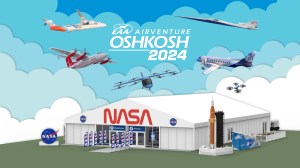
Two international organizations with the shared goal of expanding innovation in aviation have formalized their collaborative relationship in aviation-related research. This includes NASA-supported efforts to better understand the future implementation of Advanced Air Mobility (AAM) and Urban Air Mobility (UAM).
These organizations are the International Forum for Aviation Research (IFAR) and the International Civil Aviation Organization (ICAO). IFAR connects research organizations worldwide like NASA and others to better understand future challenges facing aviation, and provides insights to ICAO, a specialized agency of the United Nations that promotes the safe and orderly development of international civil aviation.
At a National Research Council Canada ceremony on April 5 in Montreal, Canada, ICAO and IFAR signed a memorandum of understanding to strengthen their collaboration. This MOU follows the signing of a Declaration of Intent in November 2020 by IFAR and ICAO representatives. The agreement states that both organizations will cooperate to promote innovative and sustainable development of international civil aviation globally, and establish a body to oversee, discuss, and mutually select innovation areas for scientific assessment.
IFAR established the first Urban Air Mobility (UAM) Expert Group in 2020 with a team of international researchers collaborating to assess UAM operations, safety, and societal impacts. The memorandum of understanding will further enhance this Expert Group’s work with their ICAO counterparts to strengthen the alignment between international research efforts and international standards and practices.
NASA’s vision for Advanced Air Mobility, including UAM, is to map out a safe, accessible, and affordable new air transportation system alongside industry partners and the Federal Aviation Administration. Once developed, passengers and cargo will travel on-demand in innovative, automated aircraft across town, between neighboring cities, or to other locations typically accessed today by car.
“IFAR chose UAM as an initial use case due to the overall international interest, relevance to sustainable aviation, and need for standardization,” said Davis Hackenberg, NASA AAM Mission Integration Manager. “We are performing scientific assessments for ICAO that are going to help them feed their strategic initiatives.”
NASA alongside the other IFAR groups of researchers will help model the regulatory and standards activities against proposed barriers. The group has already looked at industry barriers across key technology, operational, and societal barriers and assessed what is needed to implement safe and efficient UAM systems. The initial industry assessment looked at industry proposed timelines, operational locations, unique concepts of operations considerations like an aircraft having a pilot on board or being remotely piloted.
IFAR will continue to assess industry barriers and provide inputs on critical areas that ICAO would consider when setting guidelines, or standards and recommended practices. The group has learned valuable lessons through the UAM use case and will work toward expanding this work to future interactions that could address cyber security, artificial intelligence, transport class sustainability research, or other areas.
































